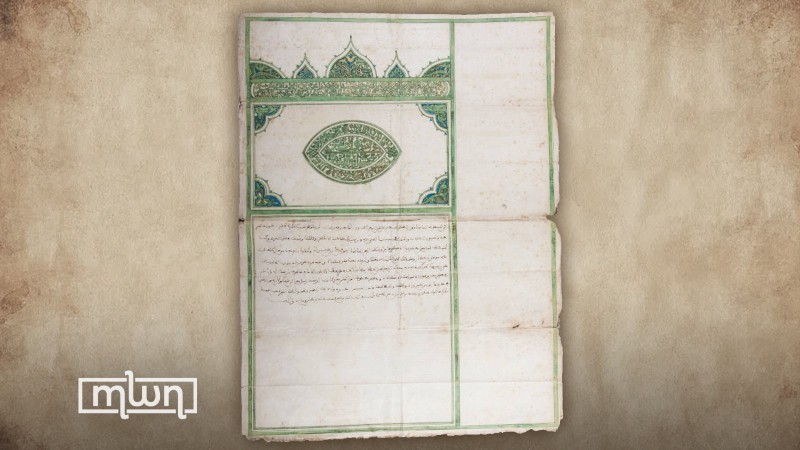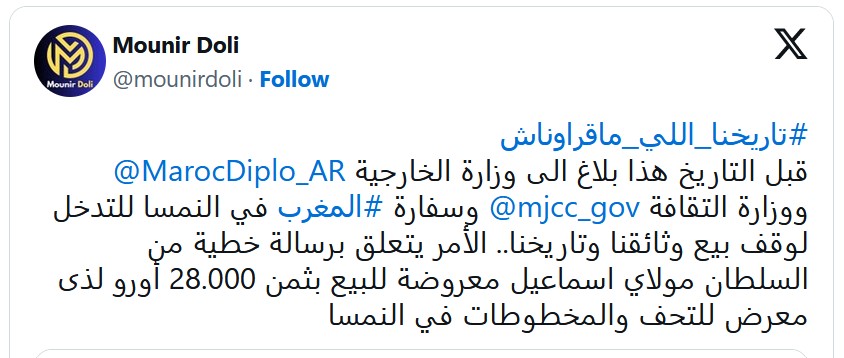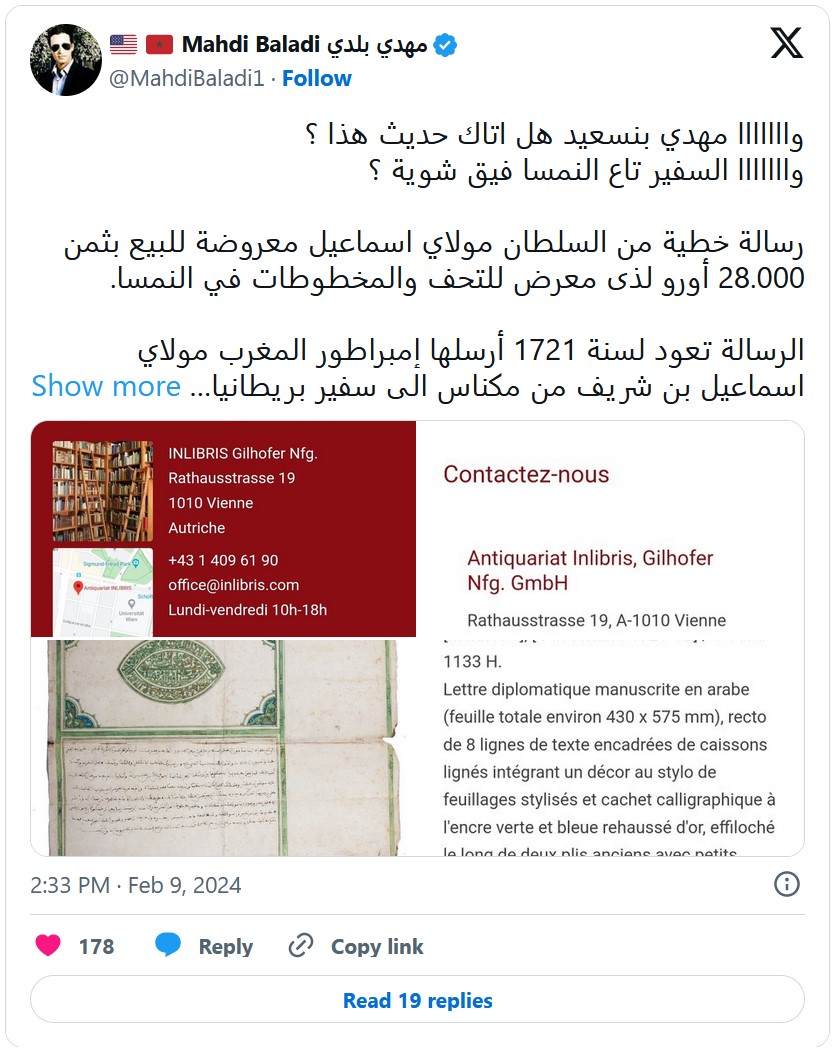The letter dates back to the 18th century and documents an important phase in Morocco’s diplomatic history with the UK.

Rabat - Moroccan netizens are calling for the return of a historic Moroccan letter that is currently being exhibited in Austria.
The letter is a diplomatic correspondence that was sent in December 1720 by Moroccan Sultan Moulay Ismail Ibn Sharif to Charles Stewart, the English ambassador at the head of a mission sent under the reign of King George I. The mission was tasked with negotiating peace with Morocco.
“Message to the Ministry of Foreign Affairs and the Ministry of Culture and the Embassy of Morocco in Austria to intervene to stop the sale of our documents and our history..,” influencer Monir Doli wrote on X.
He continued: “It concerns a handwritten letter from Sultan Moulay Ismail being offered for sale at a price of €28,000 euros at an exhibition of antiques and manuscripts in Austria.”

The Moroccan influencer’s post has garnered thousands of reactions from Moroccan netizens who lamented the sale of Moroccan heritage and even offered to set up funding campaigns to raise money to buy the historic letter.
Another influencer also denounced the selling of the letter, writing in a post on X: “Ohhh Mehdi, Has this news reached yet? A handwritten letter from Sultan Moulay Ismail is up for sale for 28,000 euros at an exhibition of artifacts and manuscripts in Austria…”

The letter’s historical significance
The letter, penned in Arabic by Sultan Moulay Ismail of Morocco to the “Christian ambassador of the English,” conveys warm greetings and acknowledges England’s desire for a truce, close friendship, and communication with Morocco.
The letter references prior communications through notable figures such as Pasha Hamet Ben Ali Ben Abdallah and Ibn al-Attar, affirming that its message had been ratified and agreed upon by relevant authorities.
In the letter, Sultan Moulay Ismail said he hoped that the proposed agreement would meet the ambassador’s expectations. He underscored the longstanding diplomatic ties between England and Morocco, citing the relationship between his cousin, Ahmad Al Mansour, and Queen Elizabeth I as a historical precedent.
In addition, Sultan Moulay Ismail extended an open invitation to renew the covenant and treaty between the two kingdoms, stressing his willingness to facilitate and encourage bilateral relations.
The correspondence was sent during the English ambassador’s journey to Morocco in 1720.
A small squadron, led by Commodore Stewart, set sail from England on September 24, 1720, with Stewart authorized as a minister plenipotentiary to negotiate with Sultan Moulay Ismail. Their mission culminated in the signing of a pivotal treaty of peace in January 1721 at Ceuta.
The terms of the treaty were significant, securing the release of 296 British slaves, granting free movement for British ships in Moroccan waters, and offering access for Moroccan ships to trade with Britain.
Prior to their return to London, a conference took place in May 1721 with Pasha Hamet Ben Ali Ben Abdallah, further solidifying diplomatic relations.
